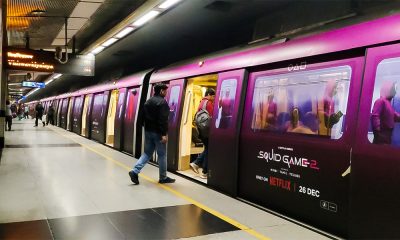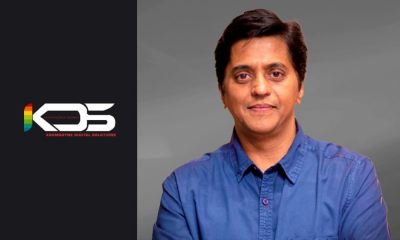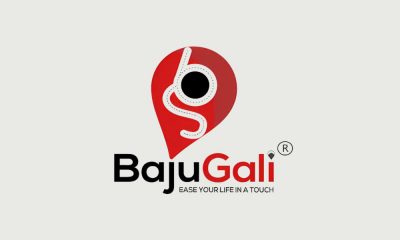OAC
The key to unlocking more love for OOH: Unified measurement system
The panel discussion on ‘How to get brands to show more love for OOH’ on Day 2 of the recently concluded OOH Advertising Convention 2024, had industry experts emphasising the importance of a standardised measurement system for OOH, even as they discussed ways of driving greater confidence, investment, and creative innovation in the medium.

The Out of Home (OOH) advertising medium is evolving rapidly with a diverse range of formats and technological advancements, offering immense potential. This was the central theme of a lively panel discussion at the OOH Advertising Convention (OAC) 2024. Moderated by Rajiv Raghunath, Managing Editor of Media4Growth, the panel focused on ‘How to get brands to show more love for OOH.’
The discussion had senior industry professionals including Apurva Sircar, Sr VP and Head of Marketing at Bandhan Bank; Anirban Paul Chaudhary, National Marketing Head at Skipper Pipe, Jayesh Yagnik, CEO of MOMS Outdoor and Lekshumanan Annamalai, Co-founder of Coral Media. The discussion delved into how OOH could evolve to capture a larger share of advertising budgets.
Unified measurement systems
Apurva Sircar highlighted the unique advantages of OOH advertising, emphasising its ability to provide market isolation and hyper-localised communication. However, he pointed out a significant challenge: the lack of a unified measurement currency. Without consistent metrics, marketers struggle to gauge the effectiveness of their OOH campaigns, leading to reliance on qualitative assessments. Apurva argued for the development of a permanent measurement system to boost confidence and investment in OOH.
This sentiment was echoed by Anirban Paul Chaudhary, who emphasised that the success of digital media is partly due to its measurable nature, suggesting that OOH could achieve similar success with reliable metrics. He noted that a standardised measurement system would allow marketers to see the real impact of their campaigns, making it easier to justify spending on OOH. The panelists collectively agreed that having a unified measurement currency is essential for the growth and credibility of the OOH industry.
Embracing diverse formats, infrastructure growth
Building on Apurva’s points, Anirban shared his extensive experience in advertising and marketing, underscoring the importance of OOH in reaching new markets and achieving hyper-local marketing objectives. He noted the advent of various OOH formats, including digital out-of-home (DOOH) and experiential advertising, which offer new opportunities for engagement. Anirban encouraged marketers to embrace these new formats and use them to amplify their digital advertising efforts.
Jayesh Yagnik, while underscoring the fact that OOH is the only medium meant solely for advertising, discussed the significant growth in OOH inventory, driven by infrastructure development. With the expansion of metro trains and airports, new advertising opportunities have emerged. Jayesh highlighted how leveraging these new infrastructures could enhance the visibility and reach of OOH advertising.
The panelists also explored the potential of innovative OOH formats such as 3D anamorphic displays and dynamic content screens, which can help OOH can stand out in a crowded advertising landscape and offer unique value to brands.
Creative customization
Lekshumanan Annamalai focused on the creative potential of OOH, stressing the need for campaigns tailored specifically to OOH, rather than mere adaptations of mainline campaigns. He shared an example of a successful campaign for a BFSI client that combined digital and OOH elements, creating a viral sensation. He advocated for a collaborative effort between marketers and OOH providers to develop creative, impactful campaigns.
Anirban added that having specialist creative engagements and development would definitely help the industry. He cited an example from a recent campaign where the outdoor creative was distinct from television and digital ads, emphasising key characters and the product with a clear and concise message. This approach not only captured attention but also reinforced the brand’s presence in a unique way.
The panelists agreed that investing in creative, impactful campaigns would significantly enhance the effectiveness of OOH advertising. Customising campaigns to suit the specific strengths of OOH, such as its ability to deliver hyper-localised messages and create a strong visual impact, can make a big difference in achieving marketing objectives, they pointed out.
Leveraging non-metro markets
Jayesh also shared insights on the growing business potential in non-metro markets, noting that the next level of growth in the OOH industry would come from smaller cities, due to increased digital penetration and changing consumer behaviours.
He shared interesting statistics to illustrate the untapped potential of smaller markets. For instance, he noted that more tourists from smaller cities are travelling abroad, according to data from Thomas Cook. Additionally, luxury car brands like Lamborghini and Ferrari report higher sales in smaller cities compared to metros.
The panelists also emphasised that the growth of OOH in smaller cities would require a strategic approach. The message was clear: Advertisers need to understand the unique characteristics and preferences of these markets and tailor their campaigns accordingly.
Collaborative efforts and accountability
Throughout the discussion, the panelists underscored the importance of collaboration between marketers and OOH providers. They also highlighted the need for accountability, with Apurva noting that digital media’s success was partly due to its measurable nature. A reliable measurement system for OOH will provide the accountability needed to encourage greater investment and creativity in OOH advertising.
Anirban also noted that integration with digital media was becoming increasingly important. By combining the strengths of OOH and digital, marketers can create more cohesive and effective campaigns with a higher return on investment.
Lekshumanan also emphasised the need to educate clients about the potential of OOH. By showcasing successful case studies and demonstrating the impact of creative, customised campaigns, OOH providers can build trust and convince brands to invest more in this medium, he pointed out.
The panelists’ concluding observations were clear: The future of OOH lies in embracing diverse formats, leveraging infrastructure growth, and developing creative, measurable campaigns. With these, OOH can become a more integral and effective part of the advertising landscape.
-

 Campaigns
CampaignsNetflix India goes full green light on OOH with Squid Game season 2
-

 Creative Concepts
Creative ConceptsSkechers launches 3D cricket shoe Bus Shelters in Mumbai
-

 Campaigns
CampaignsBeing Human marks Salman Khan’s birthday with a bold OOH campaign
-

 Sustainability
SustainabilityStatus of sustainable printing in the OOH Industry: Challenges and pathways forward


















